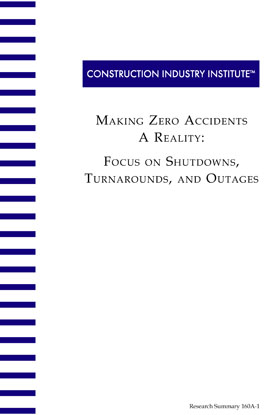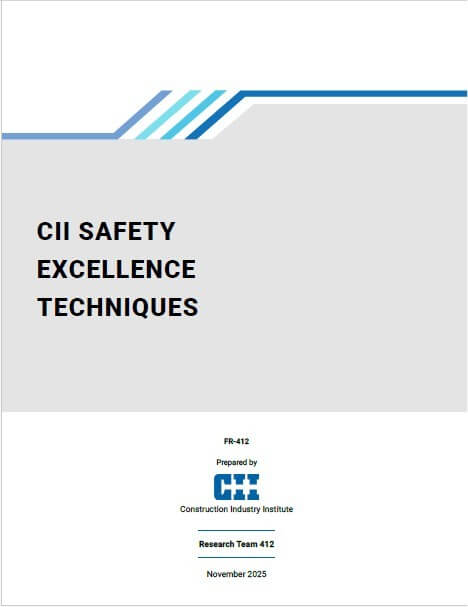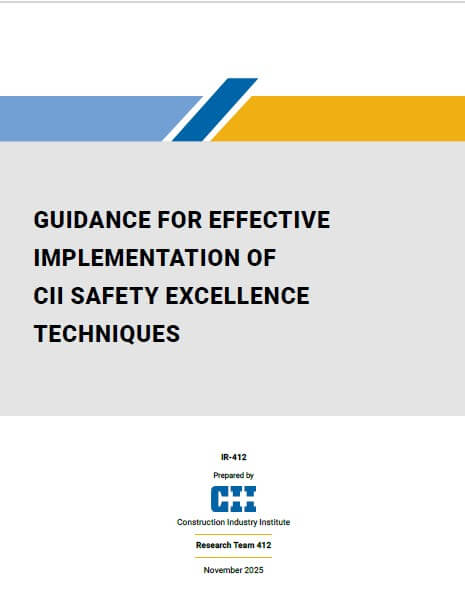
Making Zero Accidents A Reality: Focus on Shutdowns, Turnarounds, and Outages
This research study extended prior CII studies that focused on effective safety practices on large construction projects. This effort focused on short duration projects that are commonly referred to as shutdowns, turnarounds, or outages. While different sectors of the construction industry use these terms interchangeably, the term shutdown is most common and will be used here.
This research was conducted by interviewing contractor personnel on 44 different shutdown projects. The shutdown projects included in this research had impressive safety performance records. The median injury rate for these projects was less than 0.7 OSHA recordable injuries per 200,000 worker hours of exposure. In addition, 50 percent of the projects reported having achieved zero OSHA recordable injuries. While these projects all had safety performance records well below the national average for the construction industry, differences between the safety performances of these shutdown projects were found to be associated with the differences in their work practices.
The study found that there are indeed unique aspects of shutdown projects that warrant particular concern. For example, shutdown projects with better safety records were those that were successful in transferring workers from other projects to perform the work. Better safety performances were also noted on projects that began hiring workers a few weeks before the shutdown. Safer performances resulted when shorter work weeks were worked and when shutdown durations were shorter in length, especially less than two weeks. Research also found that projects have better safety performance records when crews were smaller and when projects were completed under incentivized contracts.
The findings of the study on shutdowns are consistent with the findings of prior CII research on zero accidents. There is no simple or singular solution to achieving zero injuries. There also is no single practice that makes a tremendous difference in safety performance in the absence of the other safety practices. Excellent safety performance is achieved through applying those practices that have shown to be effective, whether on large projects or on shutdown projects. This publication will be an aid to those who want to achieve safety excellence during shutdowns.
RT-160a found that shutdowns, turnarounds, or outages benefit from the safety factors referenced in Key Finding #2, but their unique characteristics benefit from additional safety factors, specifically: (RS160a-1, p. 5)
- Finding workers from similar company projects who are already familiar with the type of work.
- Smaller scheduling time units provide more detailed planning, which enhances safety performance.
- Hire workers in advance to provide training and become acclimated to the worksite.
- Shorter work weeks and project duration, with work weeks no longer than six twelve-hour days, minimizes the impact of fatigue.
- Smaller crew size or ratio of workers to supervisors.
- Incentivized contracts for good safety performance.
- Schedule operations by the hour.
- Employ workers who are familiar with shutdown work.
- Have smaller work crews.
- Implement pre-task planning on all operations.
- Provide orientation training for every worker on the project (including subcontractor workers).
- Include workers in project safety committees.
- Invite subcontractors to regular safety planning meetings.
- Base worker incentives on injury performance and safe work behavior, not exclusively on injury performance.
- Establish well-developed drug testing programs.
- Conduct thorough near-miss investigations with the involvement of various personnel.
- Use contract incentives.



